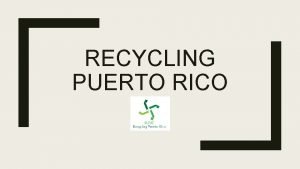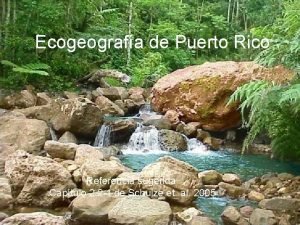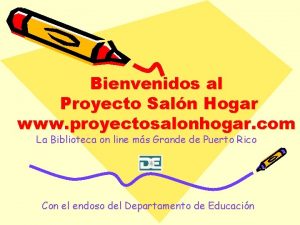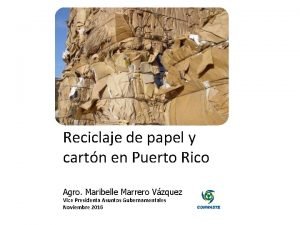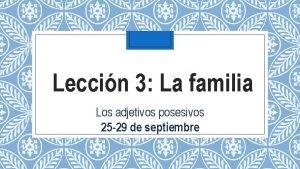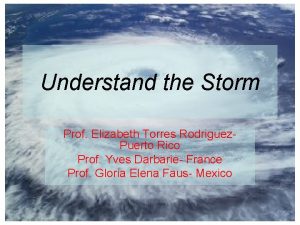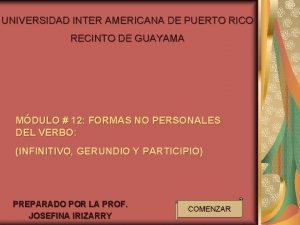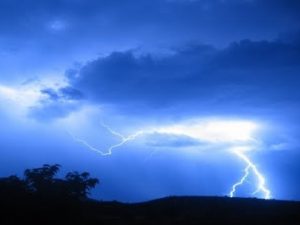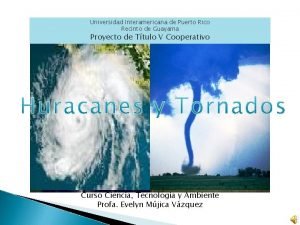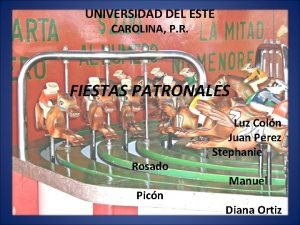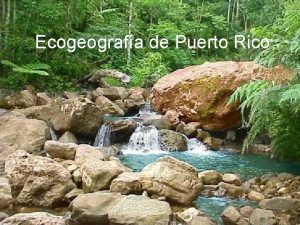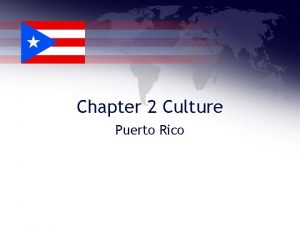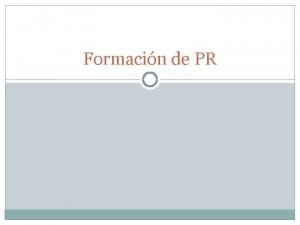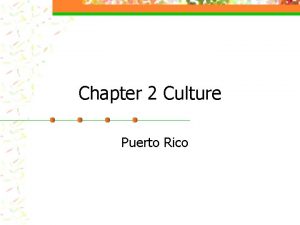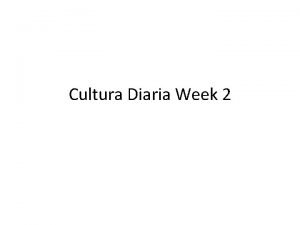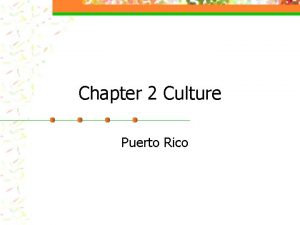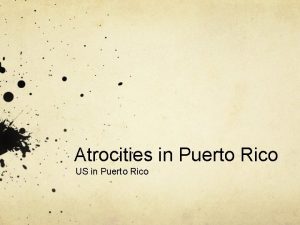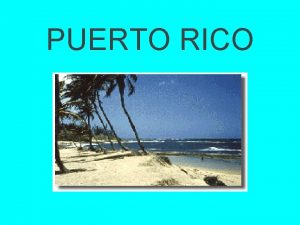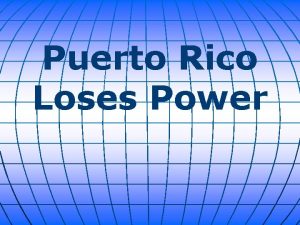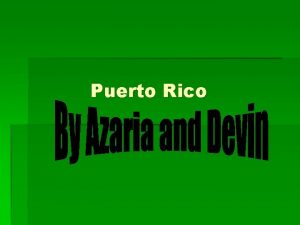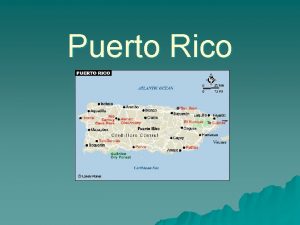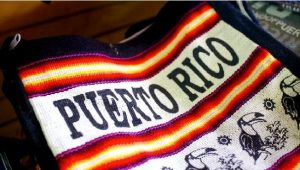st 1 Puerto Rico Organic Recycling Summit Handling















- Slides: 15

st 1 Puerto Rico Organic Recycling Summit Handling of Vegetative Debris after Hurricane Maria Terra Campestre, Guaynabo, Puerto Rico May 18, 2018

Handling of Vegetative Debris after Hurricane Maria Hurricanes Data Comparison Hurricane Georges /1998 • Category: 3 Hurricane • Sustained Winds: 115 MPH • Wind Gust of: 150 MPH Hurricane Maria /2017 • Category: 4 -5 Hurricane • Sustained Winds: • Wind Gust of: 150 MPH 185 MPH Information gathered showed that at Guayama, AES facility Wind Gust were measured at 200 MPH

Handling of Vegetative Debris after Hurricane Maria Hurricanes Path Through Puerto Rico Hurricane Georges /1998 Hurricane Maria /2017

Handling of Vegetative Debris after Hurricane Maria • Municipalities in Green Received more than 100, 000 cy of Debris • Toa Baja Received more than 200, 000 cy • Ponce Received More than 300, 000 cy • Data does not considers Municipalities of San Juan, Bayamón and others not handled by the USACE

Handling of Vegetative Debris after Hurricane Maria Operational Data As of May 14, 2018 • Approximately 4. 0 MM cy of debris collected and Processed, • Approx. 1. 92 MM cy of Vegetative Debris • Approx. 2. 06 MM cy of Const. & Demolition Debris. Background Information • Approx. 100, 000 cy of Landslide Material Handled, • Approx. 345, 000 cy of Non-Recyclable Mixed Vegetation, • Around 34, 000 cy of Hardwoods, • A total of 179, 626 debris loads handled • Total of 1, 672 USACE Certified Trucks

Handling of Vegetative Debris after Hurricane Maria Goal Reached 4, 000 cy Debris Managed May 17, 2018

Handling of Vegetative Debris after Hurricane Maria State Listed Temporary Debris Reduction Sites

State Listed Temporary Debris Reduction Sites (TDRS): Handling of Vegetativ e Debris after Hurricane Maria • Most of them didn't complied with the FEMA/ USACE Environmental Requirements: • Located in Flood Prone Areas, • Located within listed Wetlands Areas, • Did not showed the required area to undertake a TDRS operation with the required safety setback distances, • Access roads were no adequate to sustain the TDRS operations. These situations forced the FEMA / USACE to undertake an Fastrack Evaluation of sites where the TDRS could be located and at the same time, secure the Required State and Federal Permits needed for its operations

Handling of Vegetative Debris after Hurricane Maria Debris Management Challenges DUE to the LIMITATION of adequate TDRS Sites, the USACE was force to undertake the Following Work Plan: • Initiate the Collection and Hauling of the Accumulated C&D Debris at the Right of Way to the Approved Landfills, (Two weeks after the Event) • Vegetative Debris was collected One Months after the Hurricane Event, allowing for its natural decomposition.

To comply with ALL Environmental Requirements the following steps needs to be up-dated in the Puerto Rico Emergency Work Plan : Handling of Vegetative Debris after Hurricane Maria NEPA & Environmental Policy Act Compliance Requirements • Develop a standardized Permit Application Forms that could be utilized that is approved by all Stake holders, • Facilitate alternatives access options under which the GIS Data Bank required for the completion of the Sites Initial Environmental Evaluation Procedure could be available. • Establish a Pre-Disaster Work Plan where all state holders are fully aware of its contribution and responsibilities, • Operations Areas should be preliminary established as part of the PR Disaster Work Plan in order to facilitate the Implementation of the Debris Removal and processing efforts. Six (6) Areas were designated to cope with Hurricane Maria Mission.

Handling of Vegetative Debris after Hurricane Maria TDRS / Mulch Farm Sites Permit Process Steps Hurricane Georges /1998 • Blanket Waiver Order Issued by the Environmental Quality Board (EQB) covering the operation of all TDRS sites. • Time Required for Permit Approval: 1 day • Vegetative Debris Hauling and Reduction Efforts were initiated 5 days after Georges Hurricane Event • No Site Inspection Required Hurricane Maria /2017 • Secure an EQB Operation Waiver to operate a TDRS, Debris Transport (DS-1), and Final Disposal Sites, • File a NEPA Compliance Permit Application before FEMA requiring endorsements from: (1) EPA, (2) SHIPO, (3) USFWS , (4) Forest Services (If Applicable) (5) Other Federal Agencies. • Mandatory Site Inspection • Time Required for Permit Approval: 5 day • Vegetative Debris Reduction Efforts were initiated 35 days after Maria Hurricane Event

Handling of Vegetative Debris after Hurricane Maria Available Infrastructure TDRS & Farms Sites must be Readily. Debris Available and Pre-Approved as part of the PR Disaster Work Plan Hurricane Georges /1998 • Landfills in Operation: 32 Sites • Composting Facilities: 1 Site (Arecibo) • Grinders Available (SWMA): 5 Units • TDRS Sites: 1 at LMM Park • Mulch Material delivered to the SJ Municipal Landfill for Daily Coverage Hurricane Maria /2017 • Approved EQB Landfills : 13 Sites • Composting Facilities: 4 Commercial Sites • Grinders Available: 11 Units plus 4 additional on private hands (Total of 15 Units), • TDRS Sites: 9 operated under USACE, plus others handled by Individual Municipalities • Mulch Material delivered to the 13 EQB Approved Landfills for Daily Coverage, plus to 18 Agricultural Farms

Handling of Vegetative Debris after Hurricane Factors that. Maria Limited the Beneficial Reutilization of Vegetative Debris Hauling and Processing the 1. 92 MM cy of Vegetative Debris received at the TDRS Once Vegetative Debris Material was hauled: • Significant portion of vegetative debris was mixed with C&D material limiting its re-utilization capabilities and forcing us to haul said material to one of the Approved Landfills, (345, 000 cy) • Reduction Rates of Grinded Debris was less than established by FEMA Operations Manual • Soil was mixed with the Vegetative Debris forcing us to utilize Power Screens Units. • Over 900, 000 cy of Vegetative Debris was beneficially re-utilized.

Handling of Vegetative Debris after Hurricane Maria Lessons Learned & Recommended Updates in the State Disaster Work Plan • PRE-APPROVED Temporary Debris Reduction Sites (TDRS) and Potential Composting / Agricultural Farms meeting FEMA / EQB regulatory Requirements, • Develop a standardized Joint Permit Application Forms that could be utilized at all State & Federal Regulatory Agencies, • Facilitate options under which the GIS Data Bank required for the completion of the Initial Environmental Evaluation efforts could be available. • Establish a Pre-Disaster Work Plan where all state holders are fully aware of its contribution and responsibilities, • Negotiate Disposal and Re-Utilization fees covering all products to be handled,

Handling of Vegetative Debris after Hurricane Maria Lessons Learned & Recommended Updates in the State Disaster Work Plan • By Pre-approving the TDRS / Mulch Re-utilization Farms before the Disaster Event, Debris Hauling and Processing Efforts related with the Debris Mission could be initiated faster and the work load of the FEMA / EQB personnel will be completed faster. • Educate all Parties involved on the importance of collecting all vegetative debris as cleaned as possible, (This will increase our Vegetative material Re-utilization Rate over 50%), • Incorporate the utilization of Power Screens Units as part of the operational and gridding equipment Set-Up. THANKS FOR THE INVITATION TO THE 1 st Puerto Rico Organic Recycling Submit Eng. Danny Pagan, PE
 Recycling puerto rico
Recycling puerto rico Llanos costaneros
Llanos costaneros Juan el bobo cuento
Juan el bobo cuento Salon hogar
Salon hogar Reciclaje de papel en puerto rico
Reciclaje de papel en puerto rico Los adjectivos posesivos
Los adjectivos posesivos Elizabeth torres rodriguez
Elizabeth torres rodriguez Est puerto rico
Est puerto rico Tabla contributiva 2020 puerto rico
Tabla contributiva 2020 puerto rico Gerundio de puerto rico
Gerundio de puerto rico Puerto rico mapa politico
Puerto rico mapa politico Huracan hortensia en puerto rico
Huracan hortensia en puerto rico Huracan hortensia en puerto rico
Huracan hortensia en puerto rico Fiestas patronales de carolina
Fiestas patronales de carolina Llanos costaneros de puerto rico
Llanos costaneros de puerto rico Villa sin miedo
Villa sin miedo
